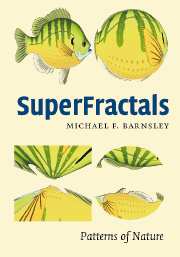Refine search
Actions for selected content:
1206 results in Computer Graphics, Image Processing and Robotics
10 - Compressive video sensing to tackle motion blur
-
-
- Book:
- Motion Deblurring
- Published online:
- 05 June 2014
- Print publication:
- 08 May 2014, pp 207-221
-
- Chapter
- Export citation
5 - Removing camera shake in smartphones without hardware stabilization
-
-
- Book:
- Motion Deblurring
- Published online:
- 05 June 2014
- Print publication:
- 08 May 2014, pp 100-122
-
- Chapter
- Export citation
9 - HDR imaging in the presence of motion blur
-
-
- Book:
- Motion Deblurring
- Published online:
- 05 June 2014
- Print publication:
- 08 May 2014, pp 184-206
-
- Chapter
- Export citation
2 - Spatially-varying image deblurring
-
-
- Book:
- Motion Deblurring
- Published online:
- 05 June 2014
- Print publication:
- 08 May 2014, pp 31-56
-
- Chapter
- Export citation
Index
-
- Book:
- Motion Deblurring
- Published online:
- 05 June 2014
- Print publication:
- 08 May 2014, pp 283-293
-
- Chapter
- Export citation
11 - Coded exposure motion deblurring for recognition
-
-
- Book:
- Motion Deblurring
- Published online:
- 05 June 2014
- Print publication:
- 08 May 2014, pp 222-245
-
- Chapter
- Export citation
8 - Richardson–Lucy deblurring for scenes under a projective motion path
-
-
- Book:
- Motion Deblurring
- Published online:
- 05 June 2014
- Print publication:
- 08 May 2014, pp 161-183
-
- Chapter
- Export citation
1 - Mathematical models and practical solvers for uniform motion deblurring
-
-
- Book:
- Motion Deblurring
- Published online:
- 05 June 2014
- Print publication:
- 08 May 2014, pp 1-30
-
- Chapter
- Export citation
Frontmatter
-
- Book:
- Motion Deblurring
- Published online:
- 05 June 2014
- Print publication:
- 08 May 2014, pp i-iv
-
- Chapter
- Export citation
4 - Efficient, blind, spatially-variant deblurring for shaken images
-
-
- Book:
- Motion Deblurring
- Published online:
- 05 June 2014
- Print publication:
- 08 May 2014, pp 75-99
-
- Chapter
- Export citation
Preface
-
- Book:
- Motion Deblurring
- Published online:
- 05 June 2014
- Print publication:
- 08 May 2014, pp xi-xiv
-
- Chapter
- Export citation
13 - Performance limits for motion deblurring cameras
-
-
- Book:
- Motion Deblurring
- Published online:
- 05 June 2014
- Print publication:
- 08 May 2014, pp 258-282
-
- Chapter
- Export citation
12 - Direct recognition of motion-blurred faces
-
-
- Book:
- Motion Deblurring
- Published online:
- 05 June 2014
- Print publication:
- 08 May 2014, pp 246-257
-
- Chapter
- Export citation
List of contributors
-
- Book:
- Motion Deblurring
- Published online:
- 05 June 2014
- Print publication:
- 08 May 2014, pp ix-x
-
- Chapter
- Export citation

SuperFractals
-
- Published online:
- 05 February 2014
- Print publication:
- 07 September 2006
Chapter 10 - Motion Planning
-
- Book:
- Mobile Robotics
- Published online:
- 05 June 2014
- Print publication:
- 11 November 2013, pp 640-690
-
- Chapter
- Export citation
Chapter 1 - Introduction
-
- Book:
- Mobile Robotics
- Published online:
- 05 June 2014
- Print publication:
- 11 November 2013, pp 1-11
-
- Chapter
- Export citation
Preface
-
- Book:
- Mobile Robotics
- Published online:
- 05 June 2014
- Print publication:
- 11 November 2013, pp xiii-xiv
-
- Chapter
- Export citation
Chapter 3 - Numerical Methods
-
- Book:
- Mobile Robotics
- Published online:
- 05 June 2014
- Print publication:
- 11 November 2013, pp 116-172
-
- Chapter
- Export citation
Chapter 4 - Dynamics
-
- Book:
- Mobile Robotics
- Published online:
- 05 June 2014
- Print publication:
- 11 November 2013, pp 173-269
-
- Chapter
- Export citation
